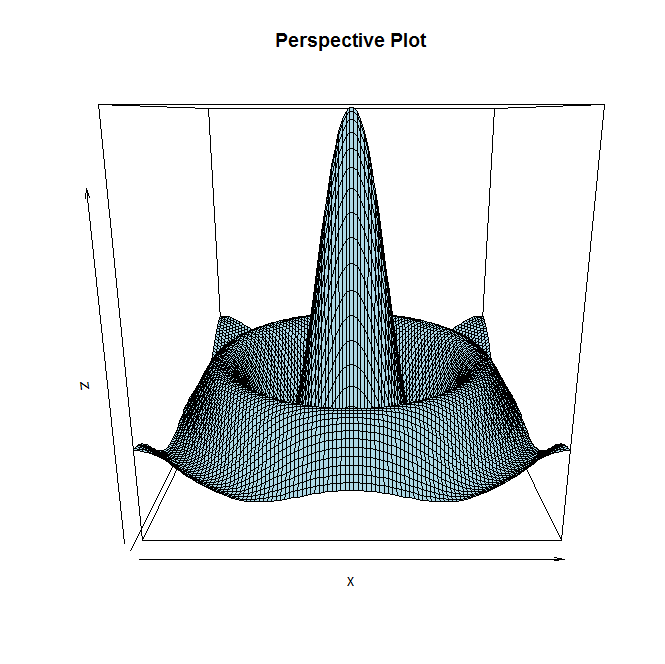What is the best way graphically to visualize a 3-D density function? As in I would like to visualize $$z=f_{X,Y}(x,y)$$?
Not necessary but R code for this would be great.
Well there are four possible approaches that come to mind (although I am sure that there are many more) but basically you could either plot the data as a perspective plot, a contour plot, a heat map or if you prefer a 3-D scatter plot (which is more or less a perspective plot when you have values of $z$ for all $(x,y)$ pairs. Here are some examples of each (from a well known 3-D data set in R):




Here are two additional plots that have nicer plotting features than the ones given prior.

 So depending on your preference will dictate which way you like to visualize 3-D data sets.
So depending on your preference will dictate which way you like to visualize 3-D data sets.
Here is the `R` code used to generate these four mentioned plots.
library(fields)
library(scatterplot3d)
#Data for illistarition
x = seq(-10, 10, length= 100)
y = x
f = function(x, y) { r = sqrt(x^2+y^2); 10 * sin(r)/r }
z = outer(x, y, f)
z[is.na(z)] = 1
#Method 1
#Perspective Plot
persp(x,y,z,col="lightblue",main="Perspective Plot")
#Method 2
#Contour Plot
contour(x,y,z,main="Contour Plot")
filled.contour(x,y,z,color=terrain.colors,main="Contour Plot",)
#Method 3
#Heatmap
image(x,y,z,main="Heat Map")
image.plot(x,y,z,main="Heat Map")
#Method 4
#3-D Scatter Plot
X = expand.grid(x,y)
x = X[,1]
y = X[,2]
z = c(z)
scatterplot3d(x,y,z,color="lightblue",pch=21,main="3-D Scatter Plot")
image.plot() command to add a color bar. Also, filled.contour() generates a similar plot with a color bar added by default.
$\endgroup$
colorRampPalette(), e.g. if you type a = colorRampPalette(c('dark blue','blue','light blue','yellow','orange', 'red','dark red')) it creates a function a that generates a discrete approximation of a color continuum that passes through those colors. The argument to a is an integer that determines the resolution of this discrete approximation.
$\endgroup$
data-visualizationis part of our mandate. $\endgroup$